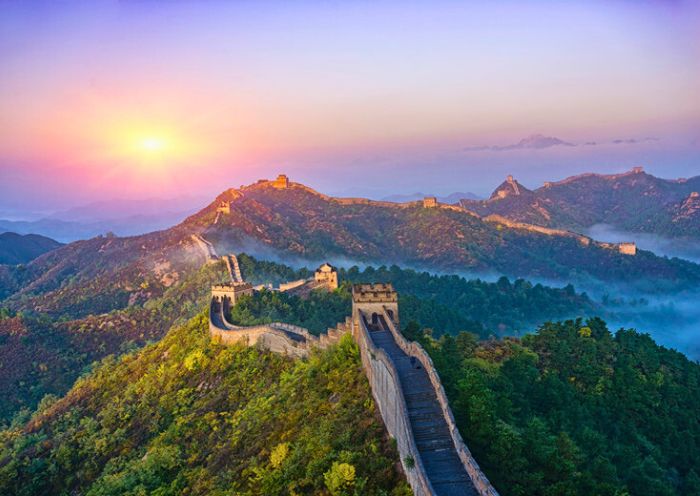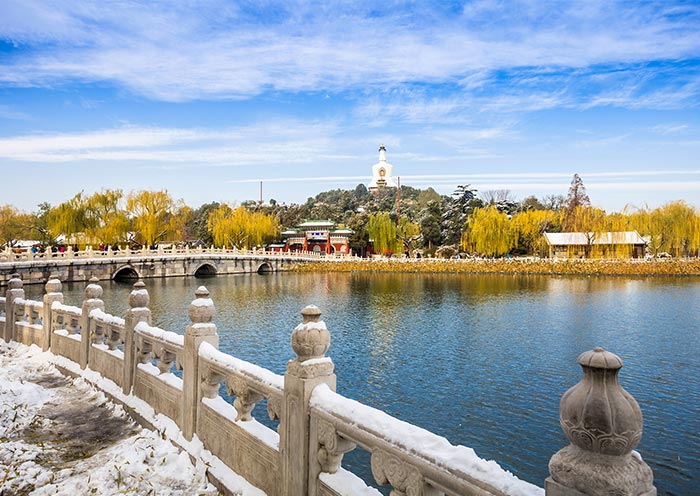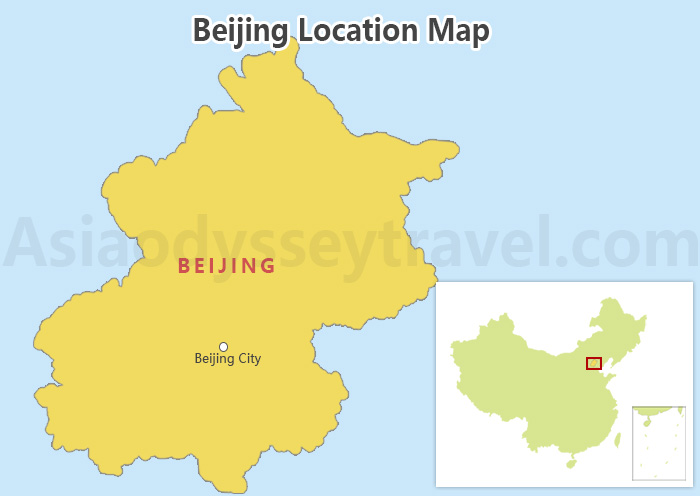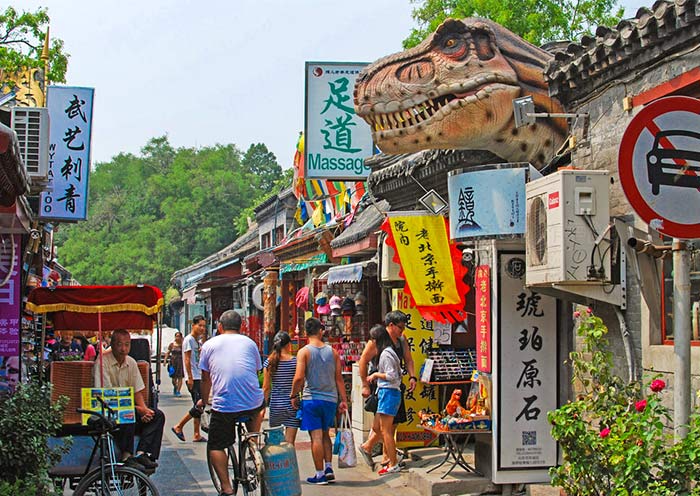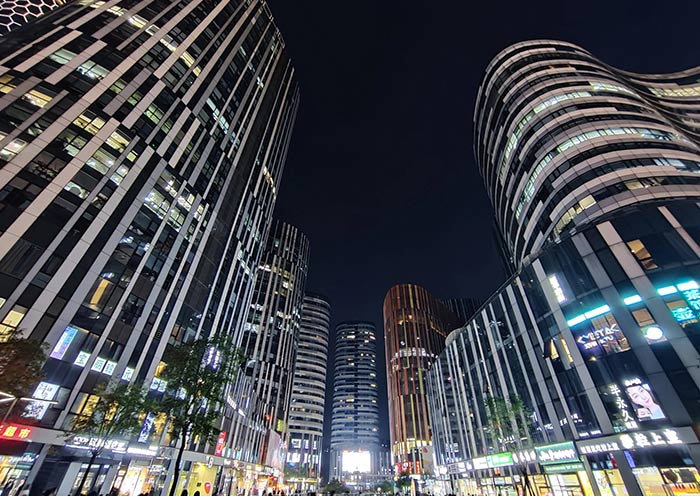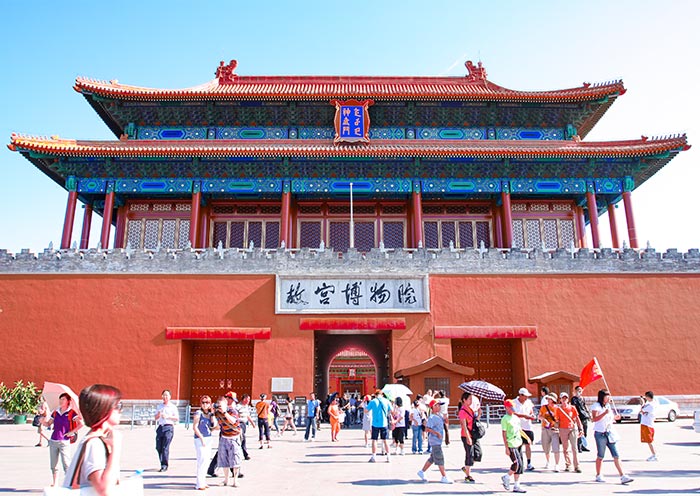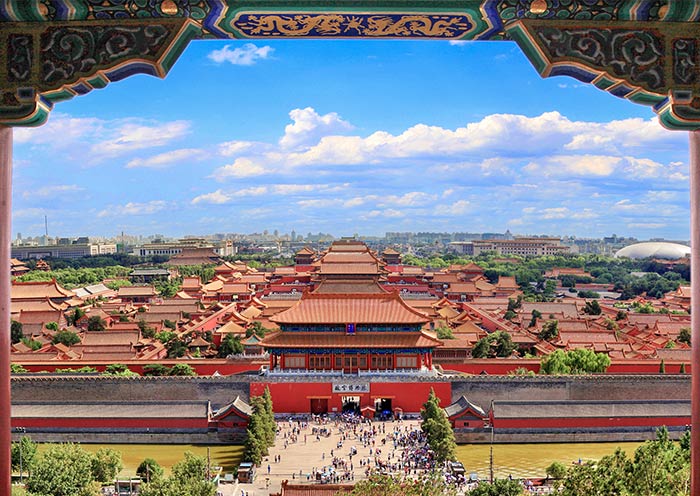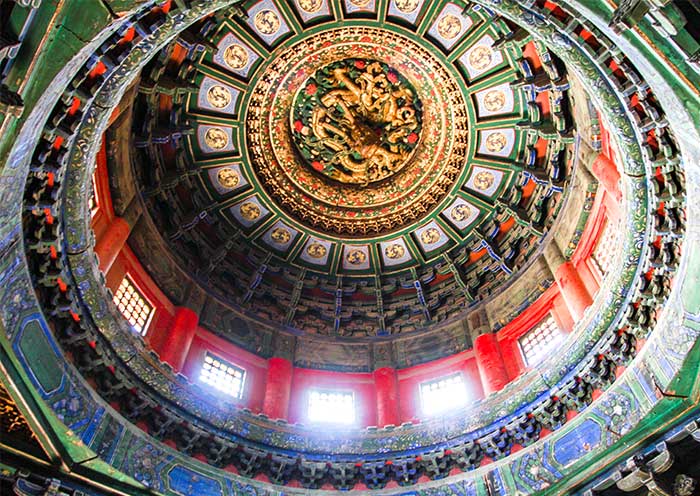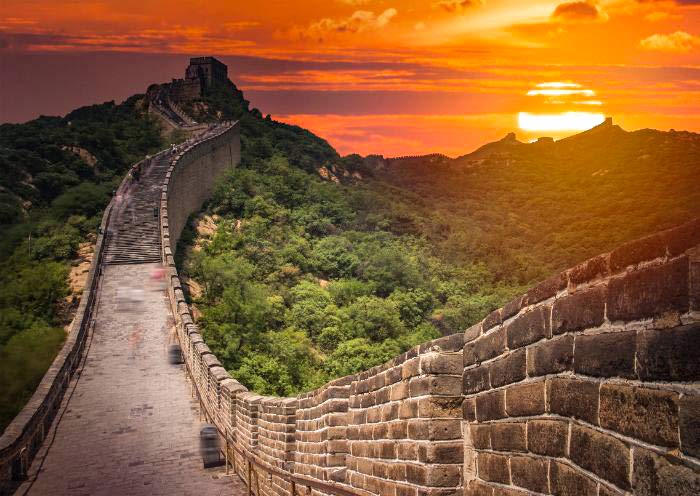While there are hundreds of popular places worth visiting in Beijing, it's not feasible to tour all of them in one go. What are the top attractions to visit in Beijing? In this article, we'll take a closer look at the top 10 tourist attractions in Beijing. This includes four world heritage sites in Beijing that are listed in many travelers' bucket list, namely the Great Wall, Forbidden City (Palace Museum), Summer Palace (Yiheyuan), and Temple of Heaven (Tiantan). To get the maximum experience of ancient Beijing, it is essential to pay a visit to Lama Temple (Yonghegong), Confucius Temple and Imperial College Museum (Guozijian), and Hutongs (narrow alleys). To discover more about modern Beijing, you won't want to miss a visit to Tian'anmen Square (The Largest Square in The World), Jingshan Park (Meet Modern Beijingers in the Former Royal Garden), and Beijing Olympic Park (Bird's Nest & Water Cube).
If you're planning a trip to Beijing and want to experience the city's authentic culture and way of life, we've compiled a list of the top 10 Beijing tourist attractions for you. These attractions offer a glimpse into Beijing's past and present, and provide opportunities to learn more about Chinese history and culture.
No.1: The Great Wall of China (World Heritage)
No visit to Beijing would be complete without a trip to the Great Wall of China. The Great Wall is a must-see attraction for anyone visiting Beijing, offering an unforgettable experience that showcases the ancient and enduring spirit of China. This UNESCO World Heritage site since 1987 has been considered one of the Seven Wonders of the Medieval World and has been featured in countless works of literature, film, and art. Not only is it an iconic symbol of Chinese history and culture, but it is also one of the most famous and recognizable landmarks in the world.
The Great Wall of China is one of the largest and longest structures ever built by humans. It was built over 2,000 years ago during the Warring States period to protect China's northern borders from invasion by nomadic tribes. The most well-known section of the wall is the Ming Dynasty wall (1368 to 1644), which stretches over 8,850 kilometers.
There is a famous saying, “One who fails to reach the Great Wall is not a hero (不到长城非好汉)”. The Great Wall is a major tourist attraction in Beijing, drawing millions of visitors every year from all over the world. The most popular sections of the Great Wall are located in the mountains north of Beijing, including Badaling, Mutianyu, Simatai, and Jinshanling. You can hike along the wall, take scenic cable car rides, and marvel at the remarkable engineering expertise of ancient China and the breathtaking natural landscapes surrounding the wall, including mountains, forests, and rivers.
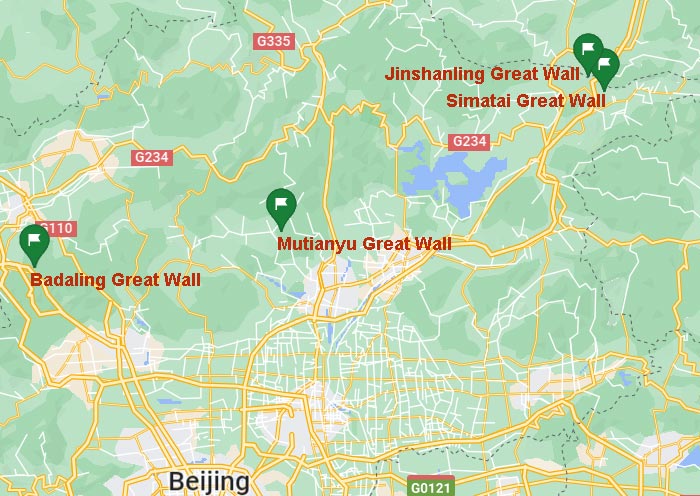
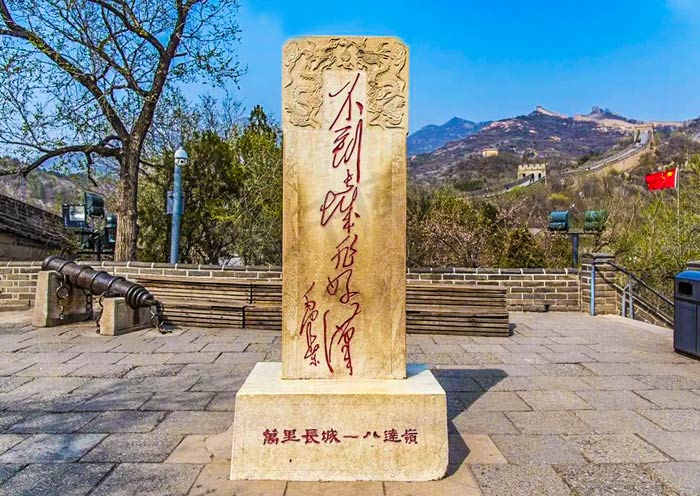
1)Badaling Great Wall
Badaling Great Wall (八达岭长城) was the first section of the Great Wall to be restored and opened to tourists in 1957. It is also the most representative and magnificent section of the Ming Great Wall, which was built in 1504. Located only about 60 km (1.5 hours' drive) northwest of central Beijing, Badaling Great Wall is easily accessible and has easy walking conditions. It is one of the best-preserved and most popular sections of the Great Wall, having been visited by many Chinese tourist groups and over 500 state leaders and VIPs, including Queen Elizabeth II of the UK, UK Prime Minister Margaret Thatcher, and US Presidents Barack Obama, George W. Bush, Carter, Ronald Reagan, and Richard Nixon, as well as South Africa’s former president Nelson Mandela and former leader of the Soviet Union Mikhail Gorbachev. One of the highlights of Badaling is the stone engraved with "He Who Has Never Been to the Great Wall Is Not a True Man不到长城非好汉", a famous line from one of Mao Zedong's poems. You can take a half day to explore the Badaling Section of the Great Wall (about 7.6 kilometers long).
Notes about Badaling Great Wall Tour:
Though Badaling is less challenging than other portions of the Wall, we usually advise our guests to avoid the Badaling Section of the wall as it is always overcrowded (with 65,000 visitors a day). By comparison, the Great Wall sections at Mutianyu, Simatai, and Jinshanling are much quieter.
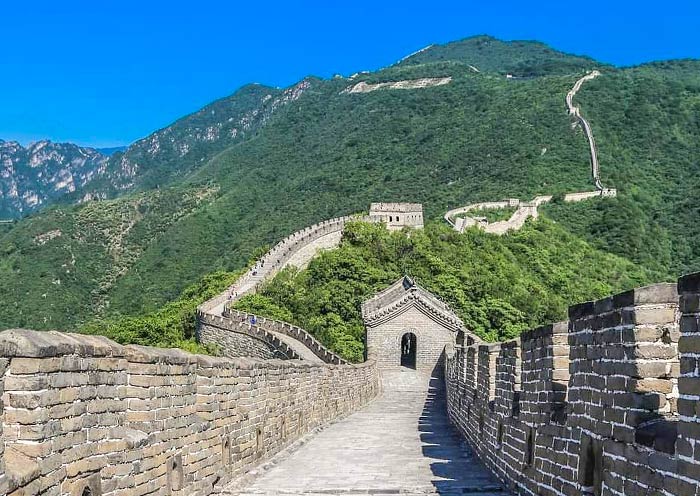
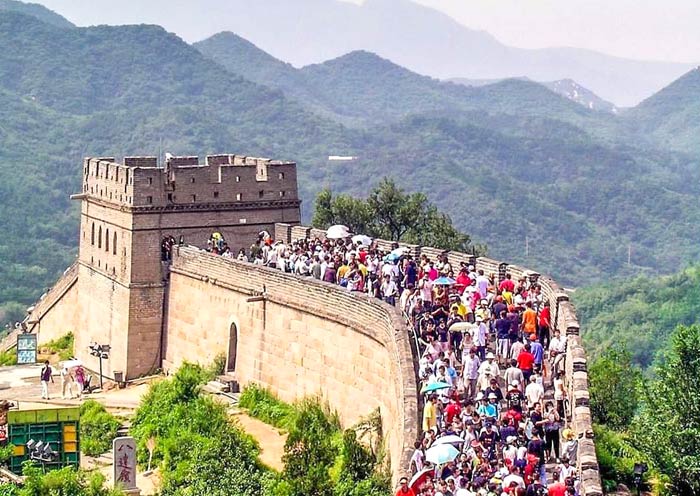
2)Mutianyu Great Wall
The Mutianyu Great Wall (慕田峪长城) is renowned as the "No. 1 Great Wall in China" and "the most beautiful Great Wall" both domestically and internationally. With over 96% of the surrounding area covered in green pine and cypress trees, the scenery is beautiful year-round. Due to its less crowded conditions and child-friendly facilities, Mutianyu Great Wall is the most popular Great Wall section among foreigners looking to escape the intense crowds at Badaling. Former U.S. Presidents Bill Clinton, Barack Obama, and Donald Trump, as well as former First Ladies Michelle Obama and Melania Trump, former British Prime Minister John Major, and other international dignitaries, have all designated a visit to the Mutianyu Great Wall when visiting China.
Built during the mid-6th century in the Northern Qi Dynasty (550-557), Mutianyu Great Wall is over 1,400 years old, making it older than the Badaling Great Wall. It has the largest construction scale and best quality among all sections of the Great Wall, with a total length of 5,400 meters. Of this, 2,250 meters of repaired parts (including 22 dense watchtowers) are open to tourists, making it the longest fully-restored Great Wall section open to tourists. You can see a rare triangular formation of three interlinked watchtowers at Mutianyu.
The Mutianyu section of the Great Wall is located about 73 kilometers (a 2-hour drive) northeast of central Beijing and is connected to the Jiankou Great Wall in the west and the Jinshanling Great Wall/Gubeikou Great Wall in the east. You can take cable cars up and down, and the "toboggan" ride down is great fun and suitable for both adults and children. A tour of Mutianyu would not be complete without hiking on the wall. While hiking, you can have a chance to see the local surrounding villages, as well as walk through hilly orchards and mountainsides. It offers a spectacular landscape like a traditional Chinese painting scroll.
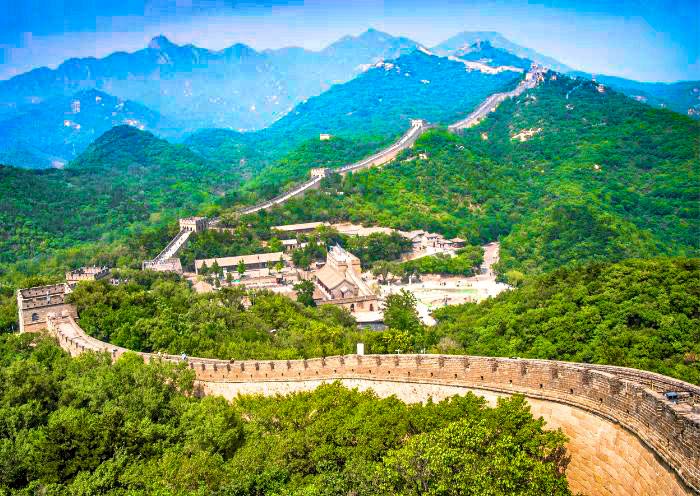
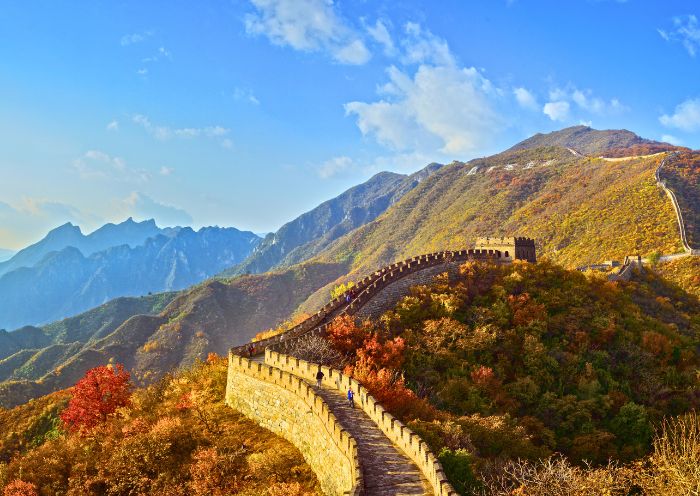
3)Simatai Great Wall
The Simatai Great Wall (司马台长城), famous for its "wildness," is the perfect section to experience a night tour of the Great Wall. It is the only Great Wall section in China that has preserved the complete ancient style of the Ming Dynasty. Luo Zhewen, a Chinese expert on the Great Wall of China, once said, "The Great Wall is the best heritage of China, and the Simatai Great Wall is the best of the best!" The Simatai Great Wall consists of 35 watchtowers and was once known for its steep and dangerous climbs, although the most dangerous parts are no longer open to visitors. Simatai is still a great choice for those who prefer more adventure. Due to its special geographical conditions, the intensiveness and variety of towers, and the fantastic scenery, the Simatai Great Wall is a remarkable place for sightseeing, hiking, and exploration.
The Simatai Great Wall is located in Gubei Water Town, which is 120 km northeast of Beijing (a 2-hour drive). It was first built in 1368, during the reign of Emperor Hongwu of the Ming dynasty (1368-1644). It is 5.4 kilometers long and is separated into eastern and western parts by the Mandarin Duck Lake (Yuan Yang Lake), which is fed by two springs, one warm and the other cold. The western part, which is connected to Jinshanling Great Wall, is gently sloped and has 20 well-preserved watchtowers. The eastern part is much steeper and demands a higher level of fitness to climb. Currently, only the section between Tower 2 and Tower 7 of the eastern part is officially open to visitors.
Simatai also offers a unique night tour experience, as the wall is beautifully lit up at night and the section between Towers 5 and 6 is open for tourists in the evening. It is advisable to arrive before sunset to enjoy views of the sunset before taking a short walk on the illuminated Great Wall at night. The whole night walking tour can be done comfortably in 1.5-2 hours. Witness the transformation of this ancient edifice under the night sky, bathed in the subtle glow of twilight. Immerse yourself in the moon's ethereal glow and uncover the secrets and legends embedded within this majestic structure. After the night tour, take a cable car down the wall and check into your hotel in Gubei Water Town.
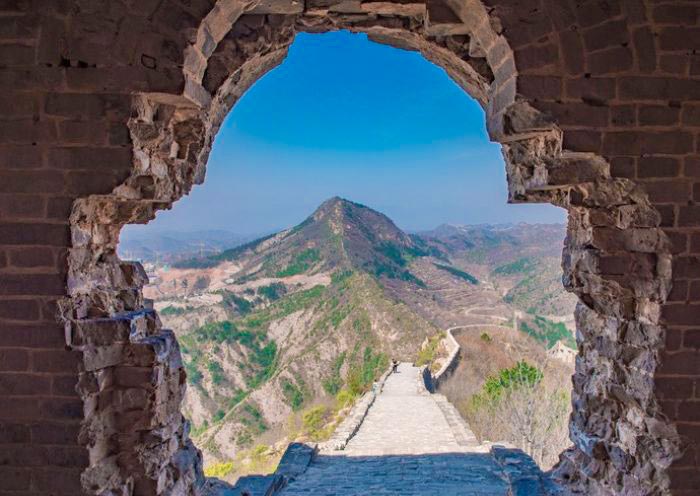
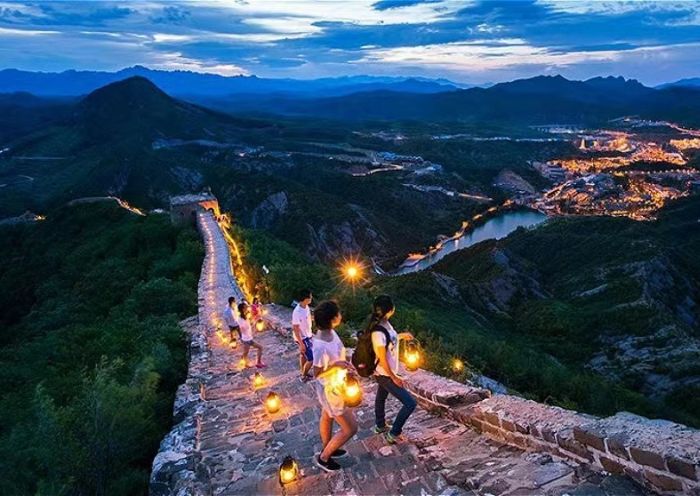
4)Jinshanling Great Wall
Jinshanling Great Wall (金山岭长城) is most popular for hiking and photography. Located around 160km northeast of Beijing (a 2.5-hour drive), it happens to mark the boundary between Beijing and Hebei Province. It is less crowded than closer sections like Badaling and Mutianyu, and the winding Great Wall on steep mountain ridges attracts many photographers, especially during sunset and sunrise. With well-preserved watchtowers standing sentinel over undulating landscapes, each view is a postcard-worthy snapshot. Weather permitting, capturing the silhouettes of the watchtowers from multiple angles is one of the great joys of Jinshanling. It's no wonder that many iconic Great Wall images are captured here. Additionally, the Jinshanling section is popular with hikers due to its combination with other sections such as the Simatai Great Wall in the east and Gubeikou Great Wall in the west.
The Great Wall at Jinshanling was built 650 years ago during the Ming Dynasty (1368–1644) and rebuilt under the direction of General Qi Jiguang (1528–1588) in the 1570s. The statue of General Qi Jiguang can be found in front of the entrance to Jinshanling. This section is around 10.5 km long, including 5 passes, 67 towers, and three beacon towers. Part of the wall has been restored, but some of it remains unrestored, offering visitors the opportunity to appreciate both the original appearance and the wild side of the Great Wall. The open part is about 5-6km long, and the full-length Jinshanling Great Wall hike is also very popular among hikers. Unlike Simatai and Jiankou, hiking at Jinshanling is of medium difficulty and is appropriate for anyone who is physically fit, including families with older children. The whole hike takes 3 to 5 hours depending on your pace. For regular visitors, a cable car can effectively cut the hiking time, taking only 20 minutes to ascend.
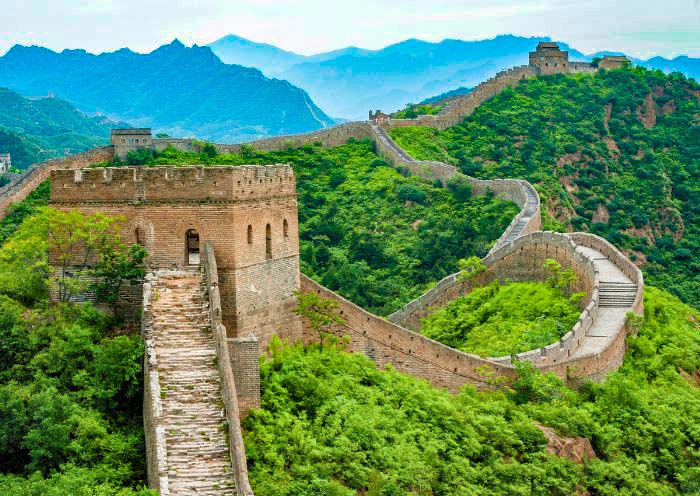
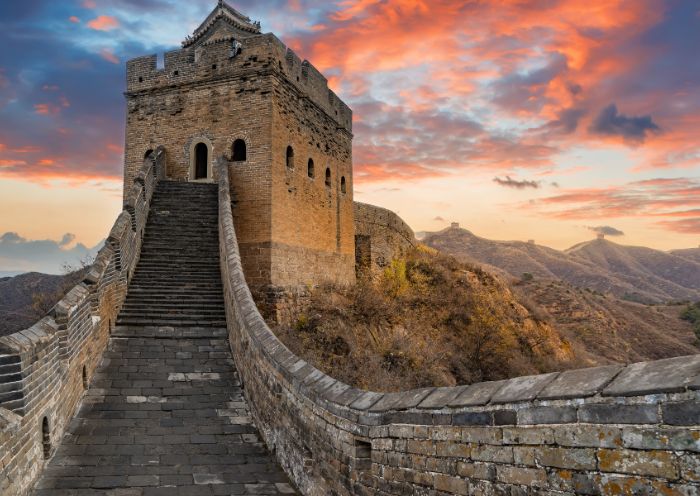
2 Days Beijing Great Wall Day & Night Tour to Mutianyu & Simatai
2 Days Wild Beijing Great Wall Hiking Tour: Gubeikou, Jinshanling, Simatai West
3 Days In-depth Beijing Great Wall Hiking Tour: Jiankou to Mutianyu & Gubeikou-Jianshanling-Simatai
4 Days Beijing Tour: City Highlights, Great Wall Night Views & Gubei Water Tour
5 Days Beijing Culture Tour with Great Wall, Imperial Palaces & Museum
No.2: Forbidden City (World Heritage)
The Forbidden City (紫禁城/故宫), also named the Palace Museum, located in the heart of Beijing to the north of the Tiananmen Square, was the imperial palace for the Ming and Qing Dynasties (over 600 years old). It was listed as a World Cultural Heritage Building in 1987. Considered a divine place, it was forbidden to ordinary people, and that's why it is called the Forbidden City. With 9,999 rooms, the Forbidden City is the largest palace complex in the world, three times larger than the Louvre Palace in France. As the largest and best-preserved ancient wooden structures in the world, it took 14 years to build and was constructed by over 1,000,000 workers, including more than 100,000 craftsmen.
Completed in 1420, the Forbidden City was home to 24 emperors of China, their families, and servants - 14 from the Ming Dynasty (1368–1644) and 10 from the Qing Dynasty (1644–1911). You can take a walk through the impressive central axis of the Forbidden City, marveling at the palace complex, traditional Chinese architecture, and royal gardens while listening to legendary stories about the emperors and their imperial concubines in different dynasties. The Forbidden City was damaged by three fires, and so most of the present palaces were rebuilt during the Qing Dynasty. Puyi, the last emperor (1906–1967), lived in the Forbidden City until he was expelled in 1925, when the precinct was transformed into the Palace Museum. Today, the Palace Museum in the Forbidden City is one of the world's largest cultural museums, attracting 14 million visitors each year. Enter through the Meridian Gate and visit along the central axis to ensure you won't miss any highlighted palaces.
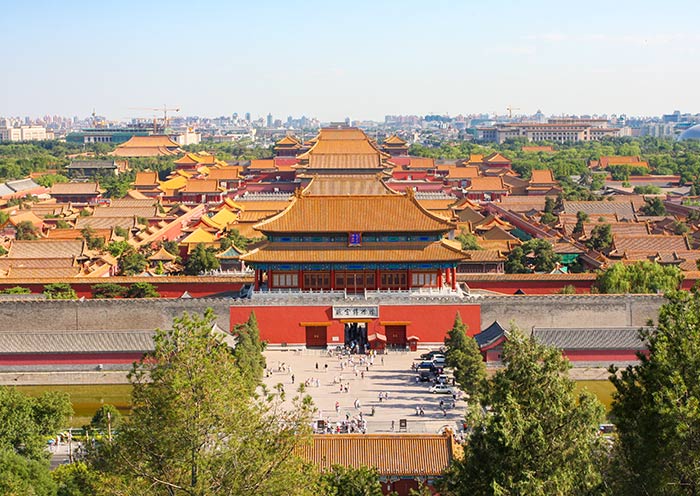
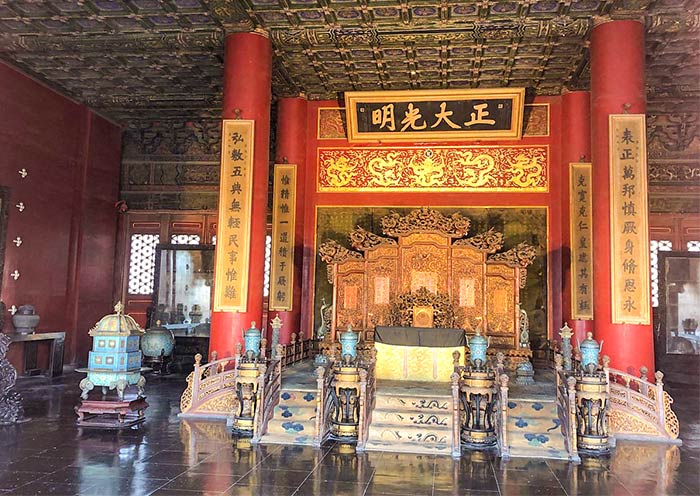
No.3: Summer Palace (World Heritage)
The Summer Palace (颐和园), located 15km northwest of the Forbidden City, is a grand collection of stunningly beautiful gardens and pavilions. As a UNESCO World Heritage site, it is considered "the world's finest example of a Chinese imperial garden" and "a masterpiece of Chinese landscape garden design". It combines political and administrative, residential, spiritual, and recreational functions within a landscape of lakes and mountains, in accordance with Chinese philosophy's ethos of balancing the works of man with nature. For centuries, emperors and empresses spent their leisure time there, adding to its great aesthetic value today. The Summer Palace has also greatly influenced Chinese horticulture and landscape gardening.
Emperor Qianlong first built the Summer Palace (Yiheyuan) in 1750 (completed in 1764) to celebrate his mother's sixtieth birthday. It was four times the size of the Forbidden City, roughly the same size as Central Park in New York or twice the size of Hyde Park in London. At that time, it was called Qingyiyuan (Clear Ripples Garden). Though largely destroyed in the Second Opium War of the 1850s, it was reconstructed by Emperor Guangxu for use by Empress Dowager Cixi, who renamed it the Summer Palace. Dowager Empress Cixi took up permanent residence there to live a peaceful life in her old age. Although damaged again during the Boxer Rebellion in 1900, it was restored and has been a public park since 1924. You are highly recommended to spend at least half a day there, enjoying activities such as boating on Kunming Lake, walking the Long Corridor, and watching traditional Chinese performances in the ancient theater.
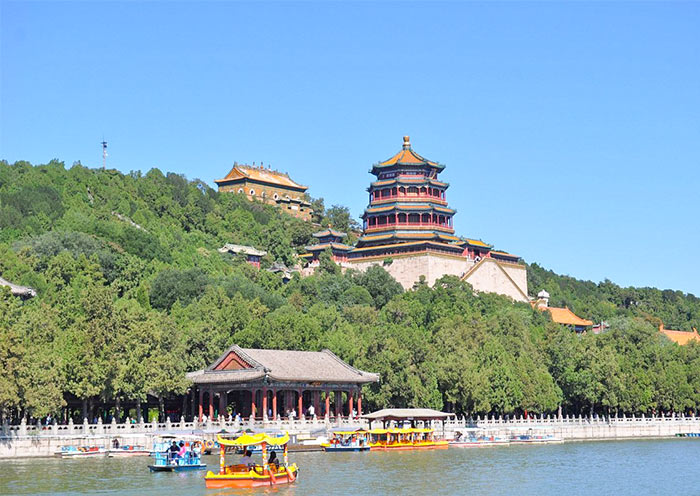
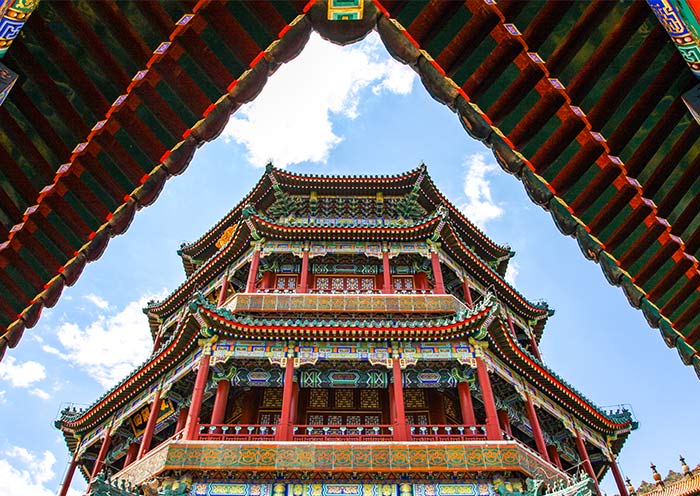
No.4: Temple of Heaven (World Heritage)
The Temple of Heaven (天坛) is an imperial sacrificial altar located in Beijing. It is the most complete existing imperial sacrificial building complex in China and the world's largest existing building complex for offering sacrifice to heaven. The Temple of Heaven is larger than the Forbidden City but smaller than the Summer Palace, roughly the same size as Central Park in New York or twice the size of Hyde Park. From 1420 to 1900, 22 Chinese Emperors of the Ming and Qing dynasties worshipped the god of heaven and prayed for good harvests there twice a year. To earn the respect of the people, Chinese emperors called themselves the "sons of Heaven". The annual sacrificial ceremonies at the Temple of Heaven were the emperors' most important religious and political activities.
Completed together with the Forbidden City in 1420, the Temple of Heaven is a dignified complex of fine cult buildings set in gardens and surrounded by historic pine woods. Within the complex, there are a total of 92 ancient buildings with 600 rooms. The design of the main buildings is a combination of circles and squares, symbolizing the belief that Heaven is round and Earth is square. The symbolic layout and design of the Temple of Heaven had a profound influence on architecture and planning in the Far East for many centuries.
The Circular Mound Altar and The Hall of Prayer for Good Harvests are the must-see highlights. You can learn about the culture of heaven worship, architectural geomancy, and medieval China's sacrificial rites. Don't forget to visit the Echo Wall to experience its magic. If you say something at one end of the wall, the message can be heard even if standing 100–150 meters away. Today, the Temple of Heaven is a morning exercise haven for locals. You can see Beijingers dancing, practicing Tai chi, and taking leisurely walks in the Temple of Heaven park. It is a perfect place to observe the retired life of Chinese people, and you are welcome to join them.
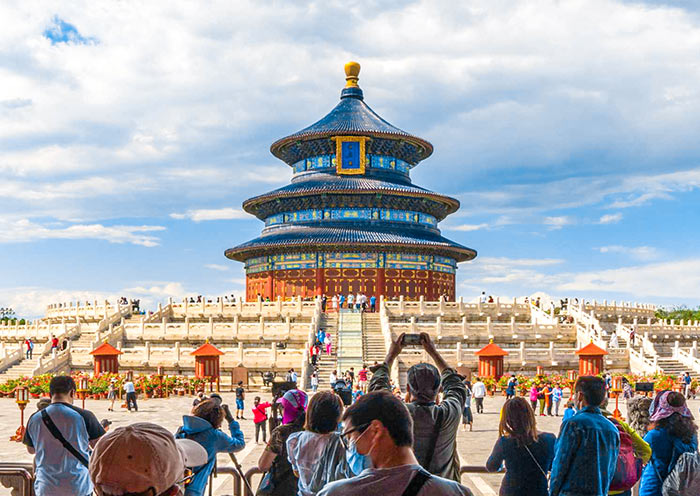
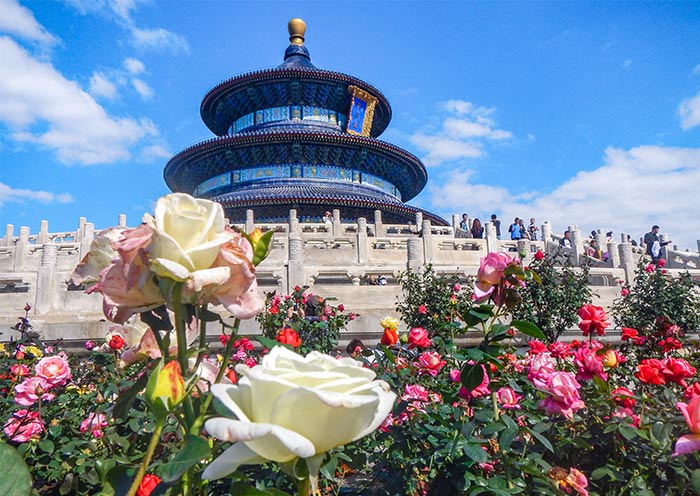
No.5: Tian'anmen Square (The Largest Square in The World)
Tiananmen Square (天安门广场) is the world's largest public square and a symbol of modern China. It has witnessed many significant events in China over the past decades, such as the founding of the People's Republic of China in 1949, grand ceremonies, National Day anniversary parades, and many domestic and foreign affairs. A vast expanse of pavement, Tiananmen Square covers more than 400,000 square meters and can hold about 1 million people for public celebrations or gatherings.
Located in the center of Beijing to the south of the Forbidden City, Tiananmen Square is very symbolic for Chinese people, and taking good pictures of Tiananmen Gate, which is shown on CCTV News every day, is a popular activity. Each morning, the flag-raising ceremony is held at sunrise and is open to the public most of the time, serving as a popular and patriotic event for many Chinese people.
Tiananmen Square lies at the center of Beijing's historical north-south axis that runs through the Temple of Heaven and the Forbidden City. The square is in front of the Forbidden City and has several notable sights, including the Monument to the People's Heroes, the Great Hall of the People, the National Museum of China, and the Mausoleum of Mao Zedong. Thousands of people visit the Square every day. The square's historical, cultural, and political significance makes it a must-visit attraction in Beijing.
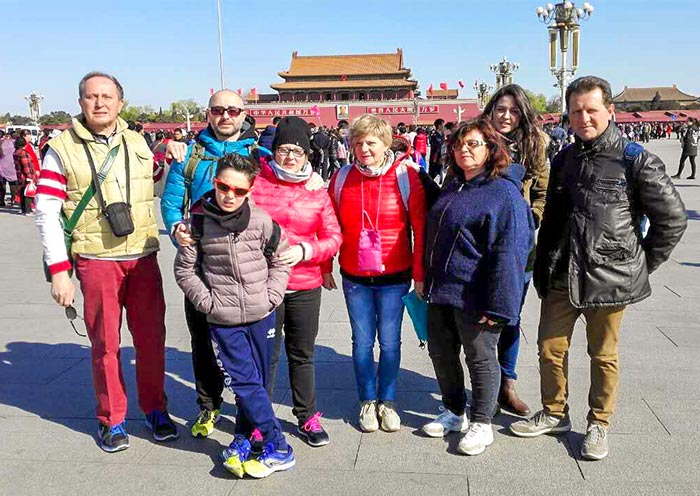
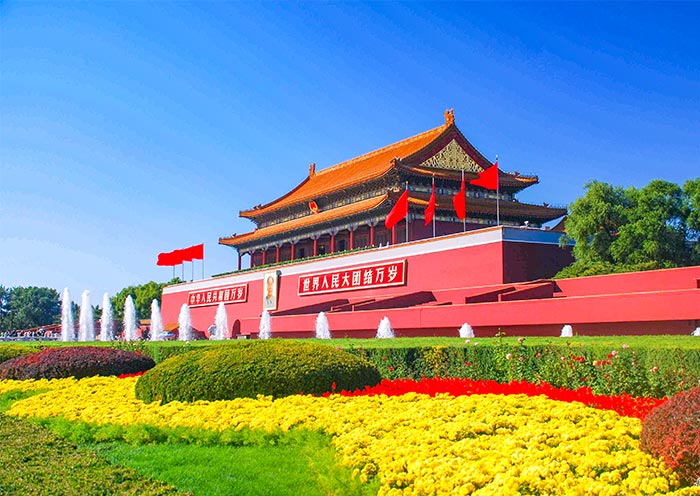
No.6: Jingshan Park (Best View Point for The Forbidden City)
Jingshan Park, located in the center of Beijing, is a beautiful royal landscape garden that is over 600 years old and the highest point of Beijing's Old Imperial City. It is one of the must-visit parks in Beijing and offers a fantastic panoramic view of the Forbidden City as well as modern Beijing. Jingshan Park was a part of the Forbidden City until the early 1900s, and now its front gate faces the north gate of the Forbidden City.
During the Yuan (1271-1368), Ming (1368-1644), and Qing (1644-1911) dynasties, Jingshan Park served as an imperial garden and was properly laid out under the Ming Dynasty. Many trees were planted on the hills, and the pavilions were used as holy places to offer sacrifices to imperial ancestors. As a result, the royal families always enjoyed amusements here, such as hunting in the hills.
Now, Jingshan Park is a peaceful public park where locals enjoy their leisure time every day. The park features superbly landscaped hills that can be ascended by steps, clear lakes, and dignified ancient buildings. On a clear day, the Wanchun Pavilion in Jingshan Park offers the best bird's eye view of the Central Axis of Beijing. This 7.8km north-south axis links the Forbidden City, the Drum Tower, the Bell Tower, and other historical landmarks!
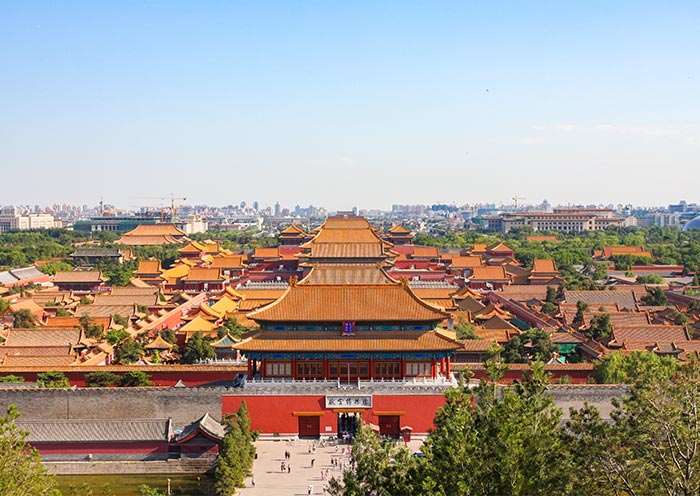
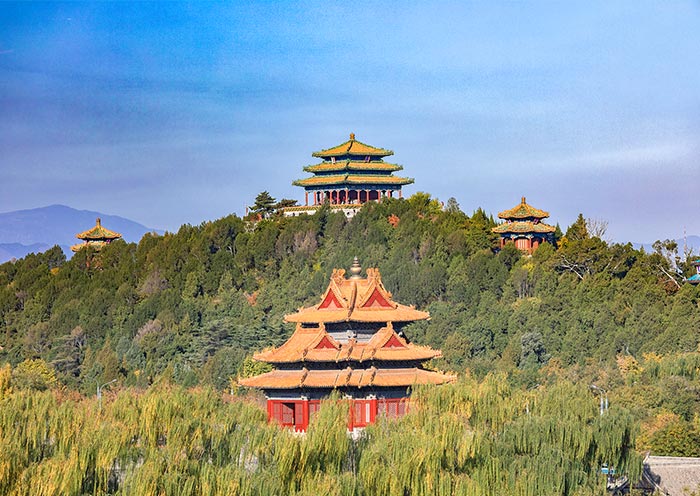
No.7: Hutongs (Wudaoyin, Yandaixiejie, Nanluoguxiang)
With over 700 years of history, the Hutongs are traditional narrow alleyways lined with courtyard houses that offer a glimpse into old Beijing. You can take a rickshaw ride through the Hutongs to appreciate the well-preserved courtyard residences and their long histories. With a Hutong family visit, you can experience the traditional daily life of ordinary people in Beijing, which provides a stark contrast to the imperial culture of palaces like the Forbidden City. The Hutongs are also known for their traditional street food, with many vendors selling local favorites like Beijing-style noodles and grilled meat skewers. Of all the hundreds of hutongs in Beijing, Wudaoying Hutong (五道营胡同), Yandai Xiejie (烟袋斜街), and Nanluoguxiang Hutong (南锣鼓巷) are three of the most popular hutongs.
1)Wudaoyin Hutong
Wudaoying Hutong (五道营胡同), located just across from Yonghegong Temple, offers a great opportunity to explore ordinary local life in Beijing and experience a unique blend of East and West. It is one of the coolest non-touristy alleyways in all of Beijing. You can stroll through its narrow alleys and browse the many featured shops that line both sides, from coffee shops to fast food joints. You can try Old Beijing yogurt and dumpling for lunch here before the exciting Hutong Family Visit. During your visit, you can communicate with Beijingers who grew up in the Hutongs and listen to their stories about life in the Hutongs and the typical lifestyle of the Hutong residents. It is a great way to gain insight into the local culture.
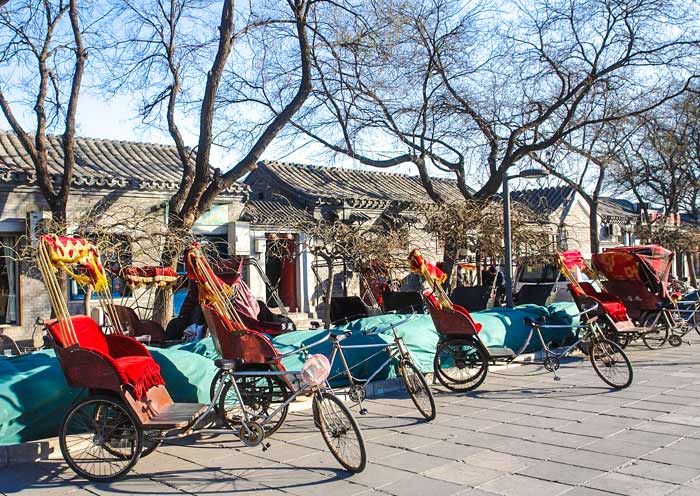
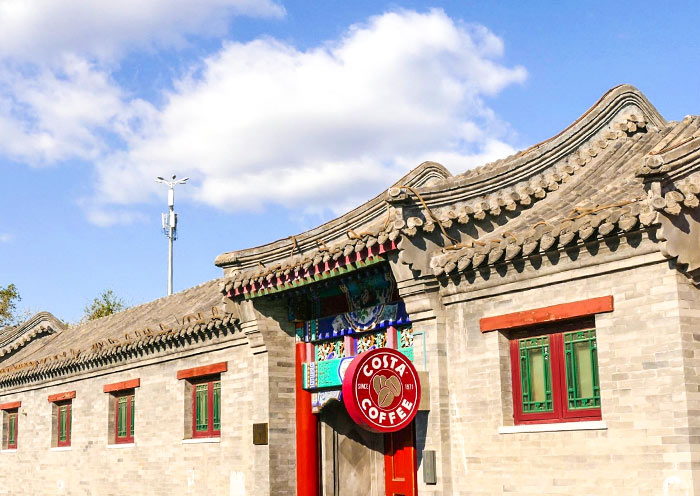
2)Yandaixiejie Street
The Yandaixiejie Steet (烟袋斜街) is the oldest commercial street (about 800 years) and one of the oldest and top 10 popular hutongs in Beijing. Yandaixie Street, which means Skewed Tobacco Pouch Street in Chinese, is a 232-meter-long Hutong. During the Qing Dynasty, people were fond of smoking and carried tobacco pouches (Yandai) with them wherever they went. As a result, many tobacco shops (selling smoking sets) opened on this skewed (xie) street, giving rise to its name. Now you can still purchase tobacco pouches of various sizes and shapes there, including porcelain ones, jade ones, wooden ones, and bronze ones. Located close to the Shichahai Park and Nanluoguxiang Hutong, Yandaixiejie is also a cultural street, where many quadrangle dwellings (Si He Yuan) are dotted, attracting millions of visitors each year. Don't forget to try the Hutong food and take a Rickshaw Tour around the Hutongs and the Shichahai Area.
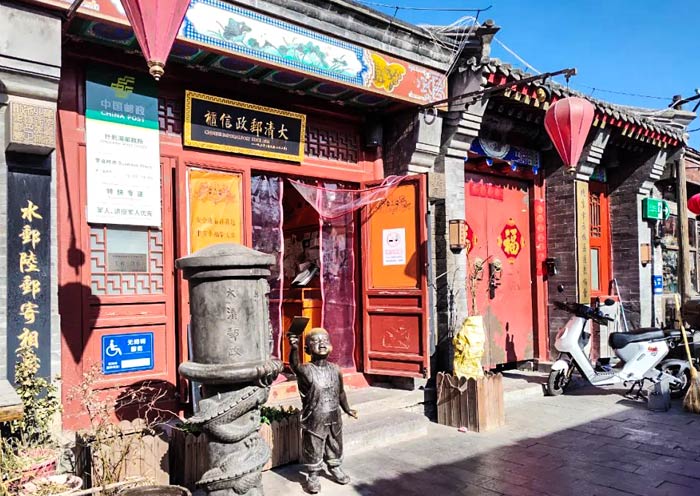
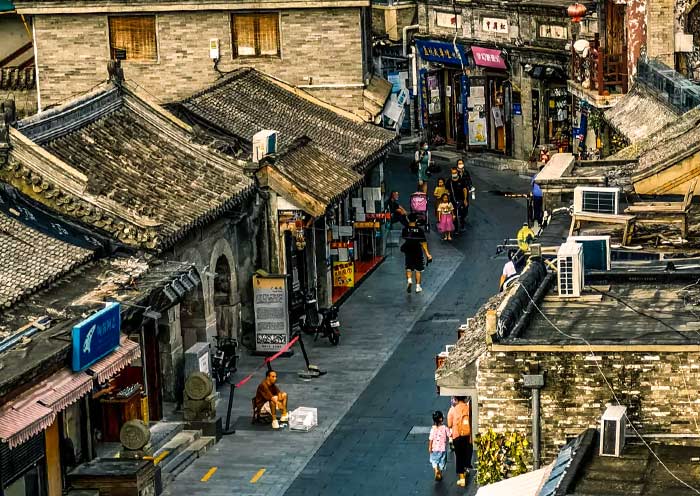
3)Nanluoguxiang Hutong
Nanluoguxiang Hutong (南锣鼓巷), also known as Southern Gong and Drum Lane, is one of the oldest streets in Beijing, with a history dating back about 800 years. It used to be home to famous and wealthy Manchu families who ruled the Qing Empire (1644-1911). In the early 20th century, it was a residential area for nationalist political leaders, artists, and literary figures. Despite the passing of many dynasties, this alley remains more complete than other historical heritage sites in Beijing.
Nanluoguxiang Hutong is 768 meters long and 8 meters wide, with eight parallel hutongs on each side of the old alley. Situated in the downtown area, it is easily accessible. Today, this street has become a favorite shopping, bar, and restaurant destination for both domestic and international tourists. The street is particularly popular among young people for its relaxed shopping and dining experience. Nanluoguxiang offers a feast for the eyes, stomach, and mind all at once.
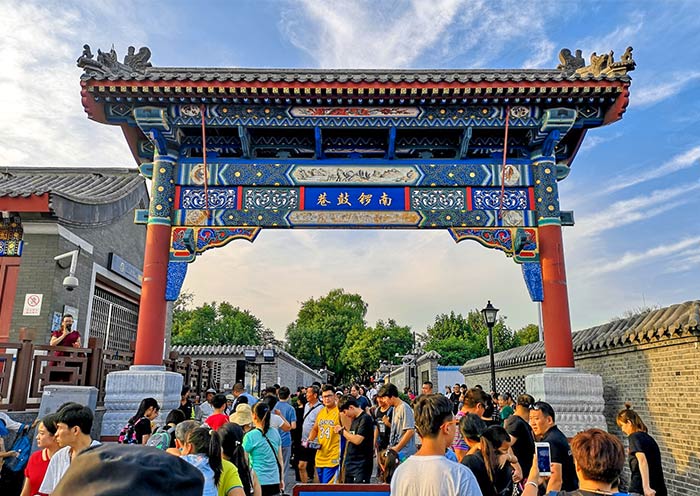
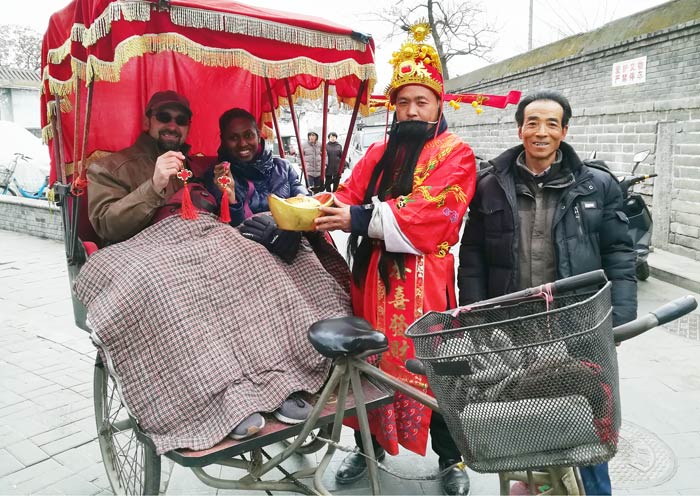
No.8: Beijing Olympic Park (Bird's Nest & Water Cube)
Beijing Olympic Park, located at the north end of the central axis of Beijing, was where the 2008 Summer Olympic Games and the 2022 Winter Olympics took place. Today, it has become a comprehensive public activity center. Most visitors to the park usually make their way to its Central Section, which includes the Bird's Nest and the Water Cube. These magnificent structures offer a great way to witness the modern Beijing skyline and have become a landmark of Beijing.
1)Bird's Nest in Olympic Park
The Bird's Nest, also known as the Beijing National Stadium, is the largest stadium in Beijing and an important Olympic venue that hosted the 2008 Summer Olympics and the 2022 Winter Olympics. It is the only stadium in the world to host both summer and winter Olympic Games ceremonies. Its outer shell is the world's largest steel structure and forms part of the most complex Olympic stadium ever constructed. The Bird's Nest is not only a striking piece of architecture but also a masterpiece of Chinese design philosophy. Today, the Bird's Nest is a popular tourist attraction and a must-see for visitors to Beijing. It offers a unique glimpse into modern Chinese engineering and architecture. The stadium also hosts a range of events throughout the year, from concerts to sporting events, making it a vibrant hub of activity in Beijing.
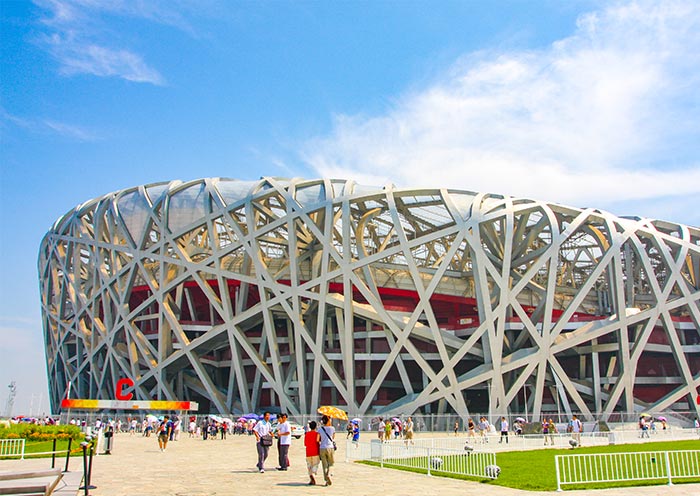
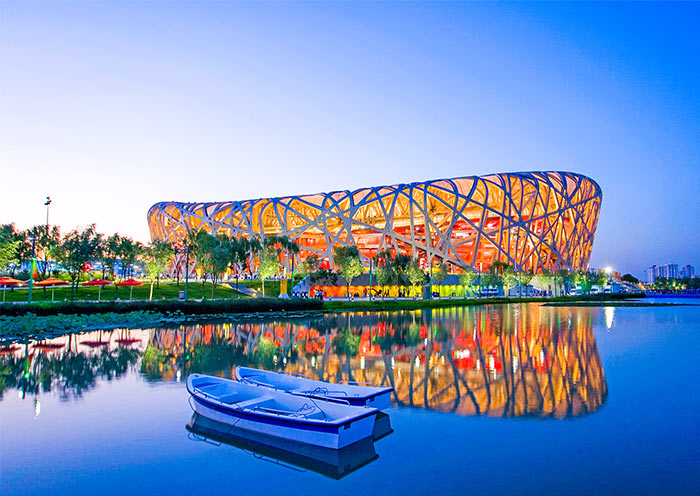
2)Water Cube in Olympic Park
The Water Cube, or the Beijing National Aquatics Center, was built as the main natatorium (swimming pool venue) for the Beijing 2008 Olympic Games and became known as one of the Games' iconic structures. Then it was turned into Ice Cube for the curling venue in the Beijing 2022 Winter Olympics. It got its name due to its huge blue cube structure with a soap bubble design. This seemingly simple "cube" was designed according to traditional Chinese culture as well as modern science and technology. Ancient Chinese believed that heaven was like a dome covering the square earth. At night, it turns into a glowing blue cube alongside the fiery red National Stadium. It is now a multi-functional center for sports, recreation, and fitness.
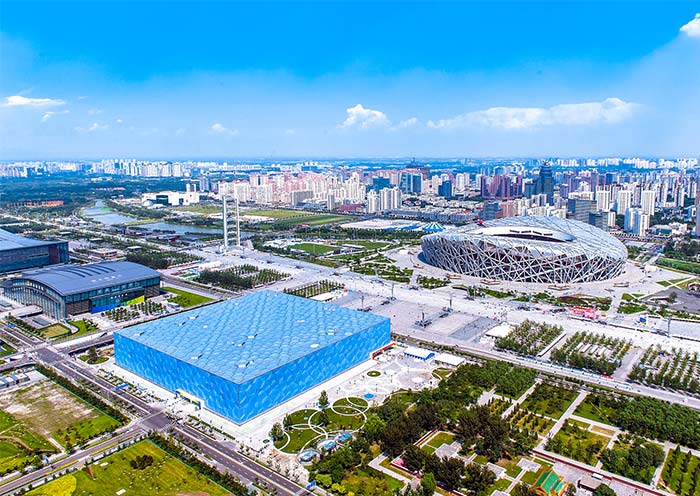
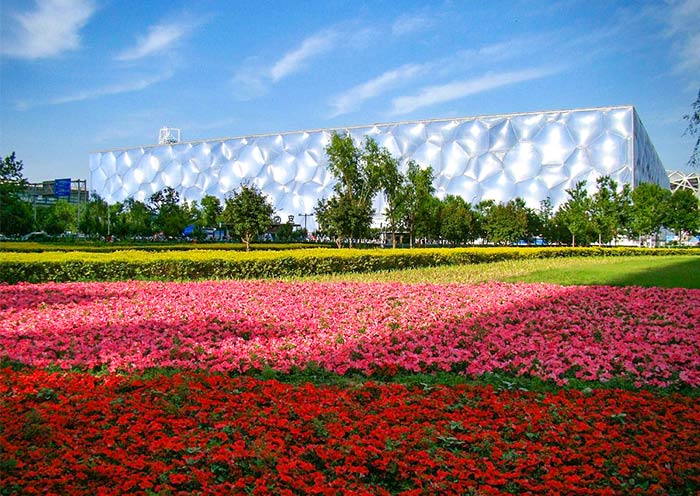
No.9: Lama Temple (Yonghe Palace)
The Lama Temple, also known as the Yonghe Temple or the Palace of Peace and Harmony, was originally a royal palace that was later converted into a temple. It was the birthplace of both the Yongzheng Emperor (1678-1735) and the Qianlong Emperor (1736-1796) of the Qing Dynasty. As the biggest temple of Tibetan Buddhism located in the heart of Beijing, it offers three treasures for visitors to explore: the largest sandalwood Buddha in the world, the bronze Buddhas of past, present, and future, and the 500-Arhat-Hill.
Today, the Lama Temple is not only a museum of Tibetan Buddhism but also a functioning temple where people come to pray. Visitors can learn about Tibetan Buddhism and engage with many monks and practitioners who are available to answer questions and offer insights into the religion. The temple provides a quiet and peaceful retreat from the noise and bustle of the city, making it a great place to relax and reflect.
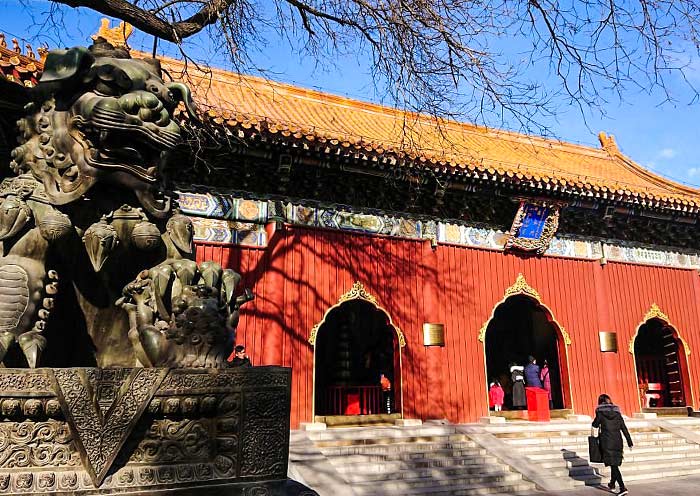
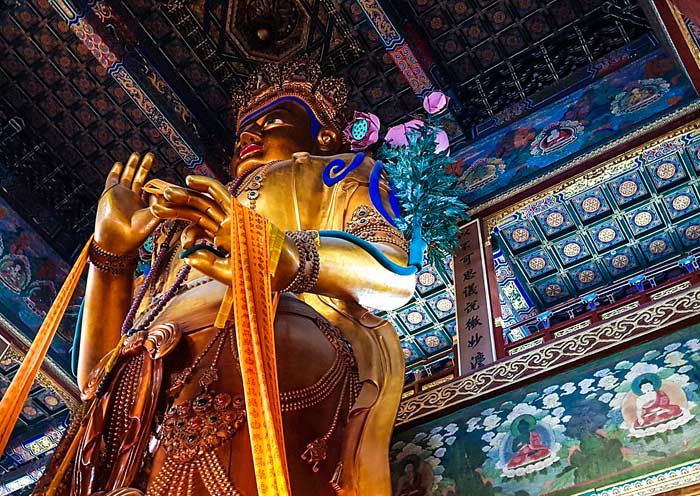
No.10: Confucius Temple and Imperial College Museum (Guozijian)
The Beijing Confucius Temple and Imperial College Museum (Guozijian), is consisting of two parts: Confucius Temple (Kongmiao) and Imperial College Museum (Guozijian). Kongmiao is the place where people paid homage to Confucius during the Yuan Dynasty (1271-1368), Ming Dynasty (1368-1644), and Qing Dynasty (1644-1911). Confucius is the greatest thinker and educationalist in ancient China.
Guozijian (Imperial academy) is a kind of university/college in ancient China that can be traced back to the Sui Dynasty (581–618). Guozijian is also the place where the Emperor personally lectures. The college was constructed right next to the temple in accordance with Chinese tradition where a temple is always to the left of a school. This museum is a good place for you to learn more about ancient China's education system and ancient buildings.
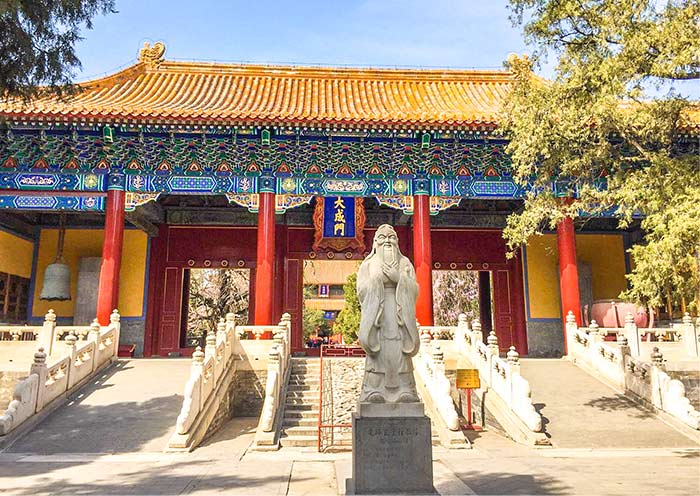
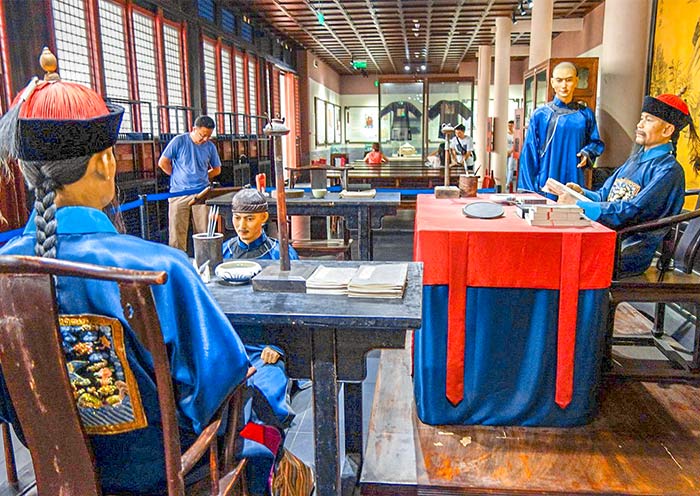
How to Plan Your Beijing Tours with Top Attractions?
Beijing is a large city full of top attractions that you won't want to miss. Therefore, it's important to plan your itinerary carefully to make the most of your time. The number of days you need for Beijing tours depends on your travel style and the attractions you want to visit. Generally, to visit the top attractions in Beijing, you will need at least 2 to 5 days. When planning your Beijing tours with top attractions, consider the following:
1 to 3 days: If you only have a few days in Beijing, focus on the must-see sights like the Great Wall of China, the Forbidden City, and Tiananmen Square.
4 to 5 days: With this amount of time, you can explore the top attractions in Beijing more thoroughly, and also have some time to experience the local culture and cuisine.
Travel to Beijing With Asia Odyssey Travel (AOT)
Experience the best of Beijing with Asia Odyssey Travel (AOT). As local experts, we've been crafting unforgettable journeys through the city for years. From the Forbidden City's grandeur to the hutongs' vibrant energy, we'll create a personalized itinerary that captures your interests.
Explore Beijing like a local with our comprehensive travel guide:
Beijing Hutongs, How to Visit Forbidden City
Beijing at Night, Beijing Food
Where to Stay in Beijing, How to Plan a Trip to Beijing
Useful Guide for Great Wall of China:
How to Get to the Great Wall of China, Great Wall of China Facts
Mutianyu Great Wall, Jinshanling Great Wall, Simatai Great Wall, Jiankou Great Wall
Most Popular Beijing Tour Packages:
Beijing Tours, Beijing Day Tours, Beijing Group Tours, Beijing Private Tours
Beijing Great Wall Tours, China Great Wall Tours, Beijing Layover Tours
Let Asia Odyssey Tours be your guide to Beijing. Contact us today to start planning your dream vacation.

